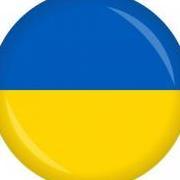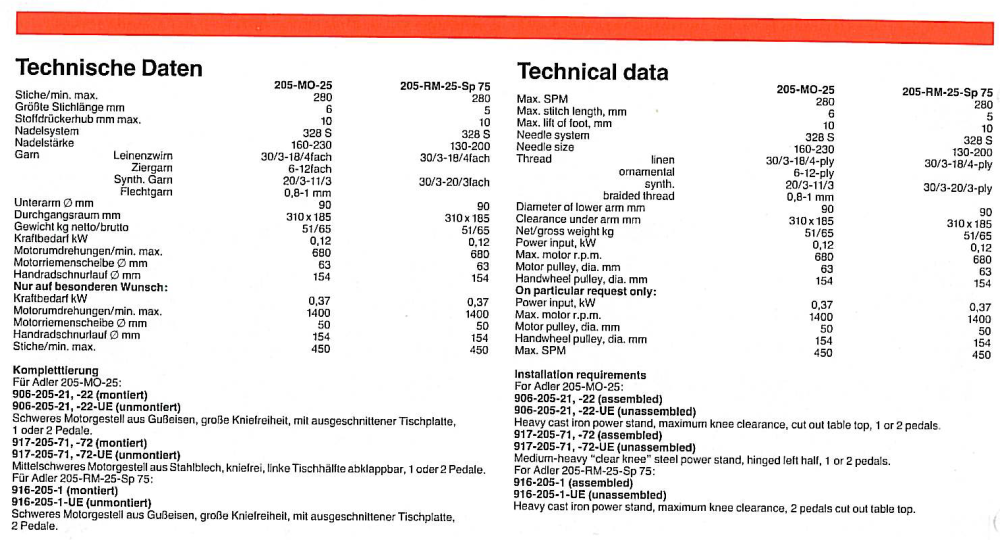-
Posts
5,750 -
Joined
-
Last visited
Content Type
Profiles
Forums
Events
Blogs
Gallery
Everything posted by Constabulary
-

Swapping clutch motor to servo motor, please assist
Constabulary replied to Ana1234's topic in Leather Sewing Machines
Just another option: https://www.ebay.de/itm/404312815806 -

threading diagram for a class 5 Singer,
Constabulary replied to Landersohn's topic in Leather Sewing Machines
@Landersohn I would check the Singer Class 7 Manuals cause the upper head section looks very similar. Hope that helps. -
I once owned a 105MO but that was quite some years ago. MO means it was meant for sewing Moccasins. IIRC it has an independent top and bottom feed and IIRC (again) it was tricky to match up top and bottom feed. EDIT: Some technical data form a leaflet but the complete file is too big to upload here. Send me your email address by a PM so I can send some more files.
-
There for sure there is a way. You have to change out certain parts (compare the parts lists of the H3 & H4) BUT I´m not sure if all the parts are still available and Pfaff OEM parts are super expensive. But most likely it will not be worth the money / trouble (my opinion). Maybe it is just the foot lifting lever and two or three other bits but I do not know for sure. You have to compare the parts lists.
-
Basically ALL 145 can sew leather it just depends on what leather thickness you want to sew and with what thread size. Keep in mind, the tag on the machine just says in what setup the machine once left the factory. It is well possible that it was been technically modified (up or downgraded for certain applications...) over the years maybe once, twice...
-

Singer 29K restoration recommendation?
Constabulary replied to Eggplant's topic in Leather Sewing Machines
29K´s are not all the same - they may look quite similar but there are several technical differences. Which 29K do you have - the number after the K is quite important. F.I. - I have restored a 29K1: and a 29K71 -
you can try parts of a Seiko TF-6. They are "clones" of the Singer 18 but I´m not sure if the race is the same on wheel feed machines.
-
Kwokhing / KH Sew is a top quality manufacturer from HongKong (China). Not sure who offers their products in the US but you can buy either directly from them or f.i. College Sewing in the UK sell their products too. Sometimes you even find them on Ebay. The parts are usually marked with their distinctive KH logo. But their presser feet are more expensive that the no name feet from Ebay / Amazon but less expensive than Pfaff OEM.
-
Most folks don´t care about "barn find condition machines" over here and especially not old odd Singers. But that is just what I like. For sure a little bit of a challenge but when I fail it did not cots much - just some bucks for gas and oil and WD40... Today I pulled out (no I hammered it out) the Zig Zag unit. Damn - totally seized up in the casting and WD40 and applying heat did not help much. The ZZ unit housing is aluminum and after siting in cast iron machine for several decades and the machine was sitting in a barn for... I don´t know how long... well that was a quite challenge but seems I did not damage the parts (will figure when it is back in the machine and ZZ is adjusted). The ZZ unit housing needed some good sanding and polishing but it now goes back in fairly easy but it is still tight fitting. I really feared braking it. I just needed quite some force (IMO) to drive it out - that reminded me of my 1st 111G156 when I hammered out the bushing on the hand wheel when I replaced the timing belt.... When I got it sewing and ZZ is working properly I will decide how I will go on with this machine...
-
Last thing I need is another zig zag machine but I was looking for a 207D for quite a while cause it is a quite interesting machine. But I wanted one in a better shape and not a barn find again. Will this ever end? Well - when it is for free you just grab it, right? Maybe there must be something addictive in the Singer cast iron The Singer "D" machines were made in Wittenberge, Prussia and I don´t think the 207 model was made anywhere else in the world. It is a beefed up version of the Singer 206 (kind of) but the 207 has a CB hook and no timing belt but seems to have some similarities in the ZZ mechanism. Interesting part here is that it is a CB hook zig zag machine and this (the CB hook zig zag) is AFAIK quite rare among industrial size machines, isn't it? And on top of that for a drop feed machine it has a very very long stitch length (dial say 8mm) especially for a machine of this age (WWII wartime made I guess). Stitch length dial and reverse lever seem to be from the Singer 96. So I think it is worth tinkering a little bit. Not sure where I will end with this... The wooden table base is worm eaten so not worth saving but the plate is still quite good so maybe I´ll keep it. The wooden pedal is cool too but has a lot of surface wear. Machine is bone dry and not spinning at all... Some picture:
-
So what machine are you using an Adler 30-7 or a Singer 29 clone / copy??? When using a Singer 29 / 29K clone / copy are you using the correct needle system 332 / 29x4 / 29x3 / or 135x16 / 135x17 and the long grove is facing left? If you are using a 30-7 the needle is longer than for the 29 / 29K and the system is called 332 LONG / 332L. Or try a new needle and read the manual again - this sometimes helps.
-
I do not know your machine in particular but I have changed needle bars on machines for using a different needle system. Needle bar length and diameter matter. 6.35mm / 1/4" is a Singer standard and I think the needle bar of a Singer 111w could probably work. https://www.ebay.com/itm/152426180931 You can use needles with 2mm needle shank then. If this NB is too long just cut it down. Since you are in the UK I would also check with College Sewing or Trojan Sewing - they for sure have this needle bar too.
-
So what problem are you tying to explain? Have you read the manual? Do you have some pictures of your threaded machine?
-
I´m using this image resizer by Brice Lambson since... forever: https://www.bricelam.net/ImageResizer/ super fast, super easy just by using the context menu (right click on picture....) in Windows
- 19 replies
-
- leather
- machines advice
-
(and 1 more)
Tagged with:
-
How many do you actually need?
-

Help to identify a vintage machine please
Constabulary replied to PaulineSul's topic in Leather Sewing Machines
and we all would like to see them Maybe you can post some good pictures of what you have. -

Help to identify a vintage machine please
Constabulary replied to PaulineSul's topic in Leather Sewing Machines
IIRC this is an outsole stitcher probably made by GRITZNER in Germany. EDIT: I knew I have seen it here before: https://leatherworker.net/forum/topic/71106-gritzner-sole-stitcher/ -
Similar to the Singer 45K1 but with a longer flat bed (Adler 4 are a ll a bit longer than the 45K), It is using system 328 / 214 needles and the same hook and bobbin as the Singer 45K. The interesting part here is it has a back gear / speed reducer. Not sure if yours is complete seems the hand wheel is missing.
-
You are welcome It will not be cheap but these Co´s make it a lot easier. I have used shipito and colisexpat. Read their rules to make sure you know what expenses come on top. But they both worked well for me but have not used them for quite a while.
-
@SteveOz Maybe a parcel forwarder is an option for you. https://www.shipito.com https://www.colisexpat.com https://www.myus.com/
-

Balance wheel rotation direction of singer 45k14
Constabulary replied to ddiuni's topic in Leather Sewing Machines
Your motor is very old. Not sure how safe it is to run it. Some wires may have a brittle isolation or so due to the age. Servo motors are the better option if you are not familiar with electrical wiring and you usually can change the rotation direction in the motor menu. Honestly better buy a servo motor. -

Balance wheel rotation direction of singer 45k14
Constabulary replied to ddiuni's topic in Leather Sewing Machines
So far all fur sewing machines I have seen run clockwise meaning truing the hand wheel away from you. KGG already mentioned it - see section HINTS (page 7) In operating the machine always tum the wheel from you. you also have a hint on top of page 6 when operating the machine the balance wheel should turn from you. You can change the the rotation direction of certain sewing machine motors. Your Singer motor looks like what we call an "Anlasser Motor" in Germany. I think you have a stack of metal prongs in it that make contact when you push down the lever on the right / the foot pedal. The more prongs make contact the faster the motor runs. But it also could be that is has some sort of rheostat. On most motors of this type you can change wiring and instructions for that are inside the motor near the wire terminal plate or the stack of metal prongs / the rheostat. But to be honest I never have touched this type of Singer motor so I do not know for sure here.




.thumb.jpg.c965c8e3b13f91cfd257037da0b49e74.jpg)
.thumb.jpg.dba7ed90ffe2c1f74c61c998e3457637.jpg)
.thumb.jpg.7ff51d71924b7ec6195ad231408633d1.jpg)
